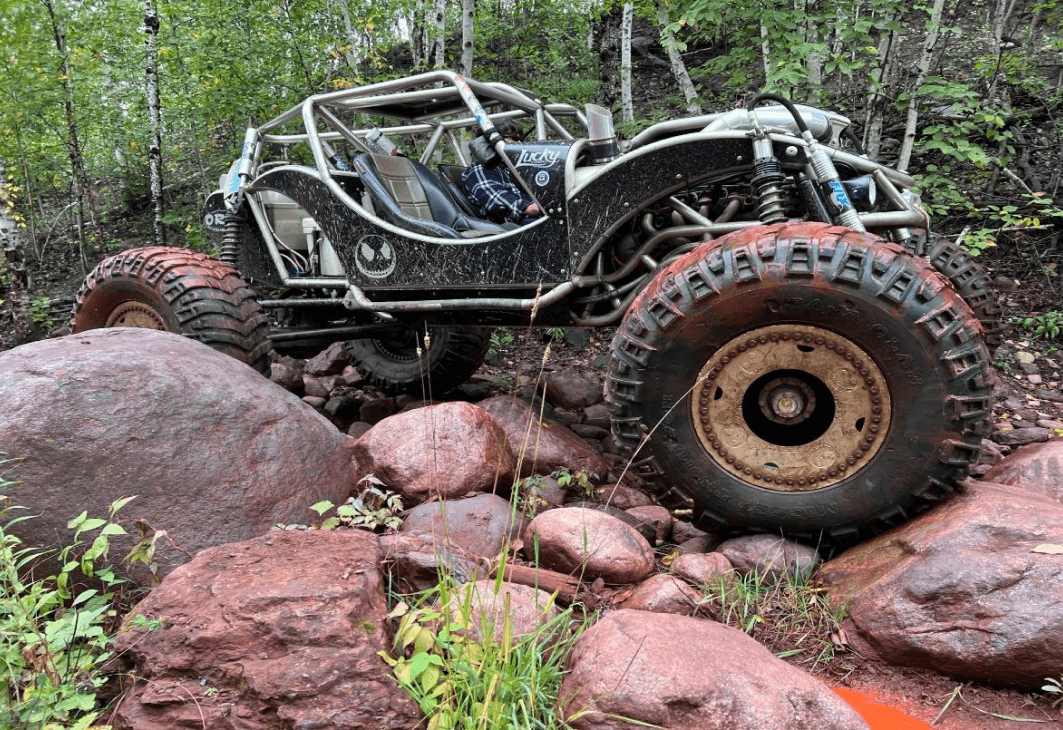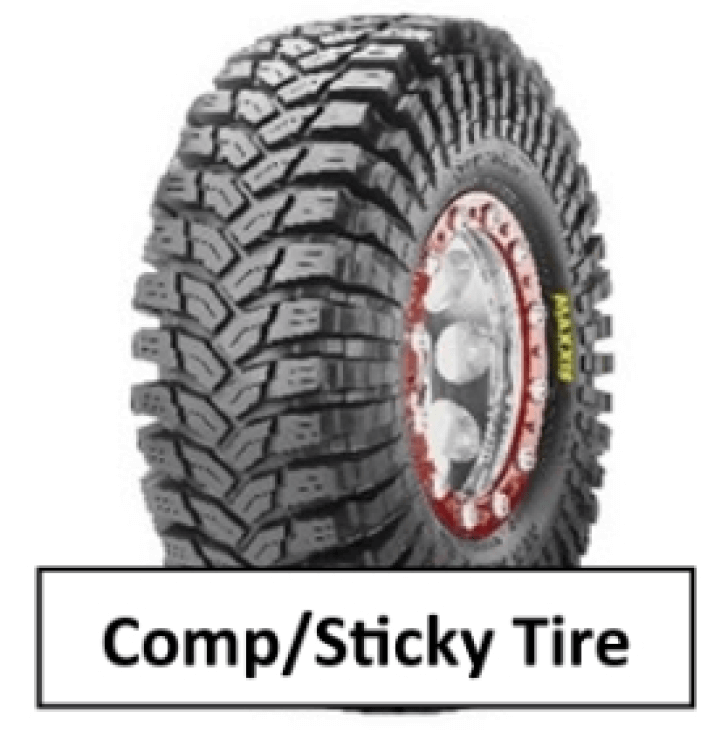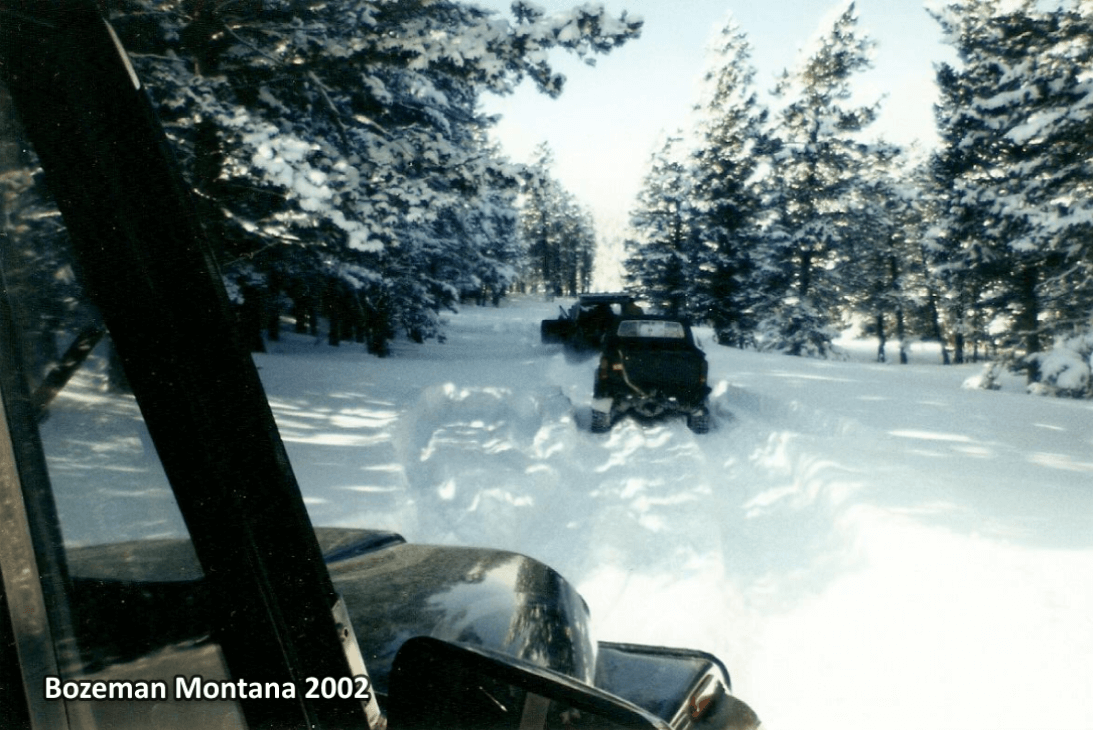
The One Tire to Rule Them All!
Is there one perfect tire for off-road? There must be, right? Just ask your buddies or the internet and they will all tell you what they think the perfect tire is. The one that is better than all the other choices out there. Personally, I think they are just trying to justify their choices. Just like the off-road terrain varies from location to location, so do the tires that work best for that application. Each tire design shines in a specific terrain or under certain conditions. There are some generalizations that can be made about each tire design. First, let’s look at the parts of an off-road tire, then we can explore different tire designs. Finally, we can look at specific tires that I have found works best on different types of terrain.

Types of Off-road Tires

All Terrain or AT - Good for vehicles primarily used on the road with only occasional off-road use. They work well on forest roads, unimproved roads, or farm fields. Generally good for drier trails without a lot of mud.

Mud - As the name implies, mud tires are designed for muddy or loose dirt trails. They also work well in rocky conditions. The large voids between the tread lugs are designed to fling mud and lose dirt from the tread.

Sand – Sand tires are used for sand only vehicles like sand rails. They have large paddles or scoops designed to paddle through the sand. They are usually very wide and balloon looking for better floatation on the sand.

Competition or Stickies - High performance tires with a softer tread pattern designed to provide extra grip. They work best on dry surfaces like rocks and have specific temperatures where they provide the most traction. Sometimes drivers will purposely spin the tires on dry surfaces to dry them out and heat them up to provide maximum traction during climbing. Due to the soft tread compound, they have a shorter service life.

Winter/Snow - Primarily used on street vehicles, they also get used for ice racing. Winter tires are made of a softer tread compound and have a lot of siping. Which are vertical cuts in the tire tread blocks to provide more “gripping edges” to grab the snow. Some vehicle owners will also add studs to their winter tires for improved traction on icy surfaces. Studs are not legal for street use in all states.
Tire Design Features

Radial – Most modern tires, designed for on road and off-road use, are considered steel belted radial tires. They ride well and wear consistently. The tread surface is flat and even, which enhances ride and traction. They typically have great tread life.

Bias Ply - Bias ply tires have the belts or plys running around the tire in a crisscross pattern. They can develop flat spots when sitting and may need to be driven on and warmed up before they start to roll smoothly. They are very hearty in design and work very well on off-road dedicated vehicles that only get driven on the street in rare conditions as they don’t balance out very well.
Side Wall Tread - Most modern tires designed for off-road use will incorporate side wall tread in their designs. Side wall tread helps to protect the tire from damage and provides a gripping surface to aid in finding traction off-road when the tires are aired down.

Tire Plys - Radial tires have plys that wrap from tire bead (the inside ring of the tire that seals against the wheel) to tire bead at a 90° angle. Bias ply tires have overlapping plys that run at a 30° to 45° angle around the outside of the tire from tire bead to tire bead. The sidewalls of radial tires flex better than bias ply tires but, bias ply tires are more puncture resistant and generally hold up to extreme trail abuse better. If you choose radial tires, look for tires that have 3 or more side wall plys for the best off-road puncture resistance.
Directional Tread - Directional tread tires are designed to provide maximum traction in one direction and are side specific. Think of the V tread designs of tractor tires or the winter tire pictured above.
Lug Spacing and Lug Design - Lug spacing increases as the tire tread designs become more aggressive for specific off-road use. The tire lugs also increase in size to protect them from trail damage. Tire lug design varies from tire to tire depending on the intended application. Utilizing CAD, tire designs have improved in versatility. They work on a wider range of terrain, run quieter down the road, and last longer than earlier designs.
Terrian Types and Recommend Tires
Forest Roads - Forest roads are usually first developed and used by the logging industry to access remote parts of the forest. Generally, they are fairly flat and smooth because they were designed to accommodate the logging trucks used to remove the cut trees. As time goes on, they can become more rutted and overgrown and can develop fun trail obstacles like down trees. Forest roads are some of my favorites to explore as you never know what you will find around the next corner. They can go for miles and provide some great exploration adventures. Traveling in a group is ideal but if you choose to travel alone bring proper recovery equipment, survival supplies, and tell someone when you are and expected return time. Most of these trails can be navigated with AT (All Terrain) tires, but due to their unpredictability I have had better luck using MT (Mud Terrain) tires like Pro Comp Xtreme MT2, Falken Wildpeak M/T, Firestone Destination M/T2, or BFGoodrich Mud Terrain T/A KM3.



Hill Climbs - Hill climbs can be fun and exciting while also being dangerous or unpredictable. It really depends on the surface condition of the hill, obstacles on the hill, and the grade of the hill. Normally, off-road hill climbs with a 25% grade or less are navigable by most vehicle and tire combinations, if you are properly aired down. See August 2024 BLOG for more information.
If the hill climb contains loose soil, additional trail obstacles, or grades greater than 25% then aggressive tires with locking axles will be preferred. As the grade and length of the hill climb increases, vehicle center of gravity and wheelbase also become a key factor. Keep your nose pointing up when climbing and down when you’re descending. Be prepared to react should the front or rear of the vehicle “gets light” signaling that you are very close to the tipping point. Speed can also add to the danger factor due to unexpected weight transfer of the vehicle as the tires gain and lose traction. Gravity always wins. Great tires for hill climbing are Mickey Thompson Baja Pro XS, Super Swamper TSL/SX, Super Swamper Bogger (not good for side hills), Maxxis Trepador, or BFGoodrich Mud Terrain T/A KM3.

Mud - Mud trails can be very challenging to navigate as the conditions are ever changing. Mud can vary from tacky to slicker than ice. Mud requires tires that have large voids between the aggressive tread lugs, powerful engines, and proper gearing to keep the tires spinning. Focus on keeping the tires spinning fast enough to fling the mud from between the tread lugs, allowing the tires to bite into the mud and move you forward. The goal is to propel the vehicle forward while maintaining vehicle control. It is a balance that takes getting stuck a lot to learn. The more aggressive the tread patterns, the better they work in mud, if you have the power to keep them turning. Look for tires like the Mickey Thompson Baja Pro XS, Super Swamper TSL/SX, Super Swamper Bogger, Falken Wildpeak M/T, or BFGoodrich Mud Terrain T/A KM2. Most will agree that it is hard to beat the Super Swamper Boggers in deep mud.


Rocks - If you are looking for serious body damage, rocks are where you find it. Like mud, rock conditions can vary greatly depending on the type of rock, shapes of the rock, size of the rock, and climate conditions. Slow and controlled is the name of the game on rocky trails. Proper gearing, tire pressure, tire design, skid plating, and locking axles all play an important role when traversing rocky terrain. Finding tires with great sidewall protection, side wall lugs, and special tread compounds all aid in finding traction on rocky trails. Look for tires with thick tread blocks, 3 ply or better side walls, great side wall tread lugs, and “comp” or “sticky” for the win. Just note that “sticky” tires are specifically designed for heavy rocks, they may not be the best choice for varied terrain or long tire life. Great tire choices for rocky trails include the Mickey Thompson Baja Pro XS, Super Swamper TSL/SX, Maxxis Creepy Crawler, Maxxis Trepador, or BFGoodrich Mud Terrain T/A KM2.

Sand - Sand is another surface that varies greatly depending on the type of sand and the moisture content of the sand. Hot dry fine sand tends to eat vehicles. Light vehicles with wide footprints and powerful engines help the vehicle stay on top of the sand. All terrain tires at low pressure work best in sand. Look for tires with many small edges to help you paddle through the sand without digging down into the sand. Aggressive mud tires have the tendency to dig rather than propel the vehicle forward, which ends up getting you stuck. Worn down, wide tires, at low pressure also work well in the sand. Like the Patagonia M/T for example. Tires that are known for good sand performance are the BFG All-Terrain T/A KO2, Firestone Destination X/T, Interco TRXUS STS, Patagonia XT, or Falken Rubitrek A/T. True vehicles built for premium sand performance are usually sand rails (very light vehicles with tube frames, fast engine, and a seat) with wide paddle tires.

Snow - The rarest of all trail types. Most people that live in colder climates have experience with snow on the roadway, but few have experienced the fun of feet deep snow on the trail. Learning to drive in mountain deep snow was challenging and I truly didn’t “get it” until someone more experienced than I jumped into my passenger seat and gave me some pointers. Like sand, driving in deep snow is all about flotation. Big, wide tires with many biting edges at very low pressures work best in snow. The idea is create the lightest pressure per square inch footprint in the snow to pack the snow down to keep your vehicle on top of the snow. Most people’s natural tendency is to hit the snow hard and fast with lots of wheel spin. That is a good way to get stuck hard and fast. Take it easy, go slow, and pay attention to weather changes. Resist all urges to spin your tires! If you get stuck, slowly work your vehicle back and forth to pack the snow down. Never attempt to navigate deep snow alone! Always bring several buddies and a good kinetic energy recovery rope and be prepared for unexpected overnight stays. Like sand, look for tires with more biting edges to grip the snow. Look for siping in the tread lugs, vertical cuts in the lugs, which provide more biting edges for the snow. One of the better off-road tires for deep snow is the BFG All-Terrain T/A KO2.
As you can see, one tire does not rule them all. Finding the right tire for your application is not always clear. My best advice is to figure out what type of terrain most of your off-road trail adventures will be on, then do some research to see what tire works best in that environment. Pay attention to what tires are on the local vehicles. Ask around and get a consensus of what tire works best in that area. Don’t take the word of just one person, including myself. Ride in some other vehicles like yours, with different tires, and see how they do in different situations. See what works best and what doesn’t. If you see yourself in all these environments and don’t want to have several sets of tires laying around, then you can’t go wrong with a high-quality mud terrain tire. They generally work well in most cases. Look for one with at least 3 ply side walls. They are better at resisting punctures from trail obstacles. The proper off-road tire can make a huge difference to your enjoyment of the trail. Taking extra time to find the right tire is time well spent. Don’t get distracted by the hype of the newest and greatest tires. Sometimes they are worth the hype, often they are not. Wait until they have been tested by true off-roaders and see what they have to say. Many times, it is hard to beat the classics, like the original Super Swamper tires.
Aaron Bjorklund